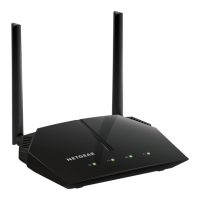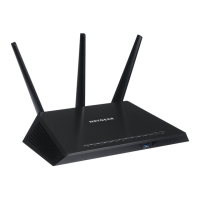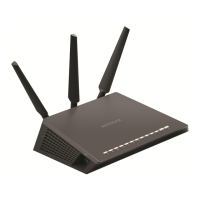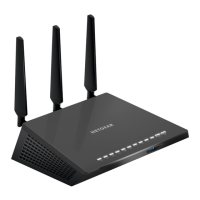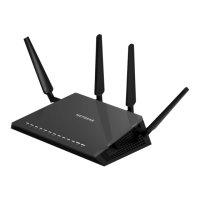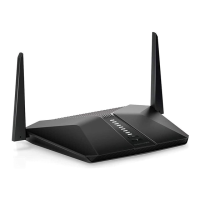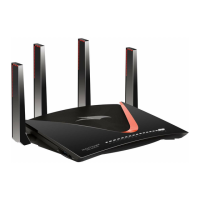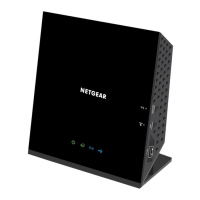
Do you have a question about the NETGEAR AC1450 and is the answer not in the manual?
| Wi-Fi Standard | 802.11ac |
|---|---|
| USB Ports | 1 x USB 2.0 |
| Frequency Bands | 2.4 GHz and 5 GHz |
| Security | WPA, WPA2, WEP |
| Antenna | 2 x external antennas |
| Ethernet Ports | 4 x 10/100/1000 Mbps |
Open the box and check for router, cables, and installation guide.
Familiarize yourself with the router's panels, LEDs, buttons, and label.
Guidance on optimal placement for best wireless signal coverage.
Gather ISP information and ensure network devices are ready before setup.
Use the NETGEAR genie application via web browser for router installation.
Connect to the wireless network manually or using Wi-Fi Protected Setup (WPS).
View or modify basic ISP information and use the Setup Wizard.
Set up parental controls to filter objectionable content for computers.
Configure wireless network name (SSID), security options, and passwords.
Create a separate guest network for visitors to access the Internet.
Use the wizard to automatically detect and configure your Internet connection.
Configure WAN/LAN settings, DMZ, MTU, DHCP, and RIP for network operation.
Configure router as DHCP server and reserve static IP addresses for devices.
Set up WPS for easy wireless connections and configure QoS for traffic prioritization.
Insert and access USB drives from Mac/Windows computers via network shares.
Examples of sharing files like photos, documents, and multimedia via USB.
Configure network device name, workgroup, and access methods (HTTP, FTP).
Connect and share a USB printer across the network for Windows and Mac.
Install and use the utility to manage shared USB printers and scanners.
Block specific HTTP traffic using keywords or domains on a schedule.
Block specific Internet services or port numbers for network computers.
Configure port forwarding to allow external access and port triggering for dynamic access.
Configure email alerts for security events, logs, and notifications.
Check for and install new firmware updates for router performance.
Check router status, port information, and access system logs.
Back up, restore, or erase router configuration settings.
Change the default administrator password and set up recovery options.
Configure wireless radio, schedules, WPS, AP mode, MAC access lists.
Set up Bridge mode and Wireless Distribution System (WDS) for network expansion.
Enable remote access and set up Dynamic DNS for domain name access.
Configure various IPv6 connection types: Auto Detect, DHCP, PPPoE, Fixed.
Monitor Internet traffic and enable Universal Plug and Play for device connectivity.
Basic troubleshooting tips and a sequence for restarting your network.
Use router LEDs to diagnose power, Internet, and wireless status issues.
Resolve issues preventing router login or Internet access.
Diagnose and fix wireless connection issues and weak signal strength.
Use ping utility to test LAN path and diagnose network connectivity.
Restore the router to its original factory configuration settings.
Details on router hardware, protocols, dimensions, and operating parameters.
Information on regulatory compliance for US and Canadian markets.
